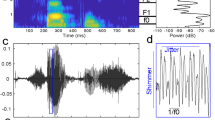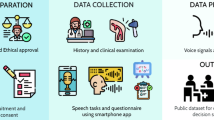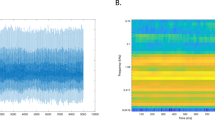Abstract
Background:
Voice disorders affect patients profoundly, and acoustic tools can potentially measure voice function objectively. Disordered sustained vowels exhibit wide-ranging phenomena, from nearly periodic to highly complex, aperiodic vibrations, and increased "breathiness". Modelling and surrogate data studies have shown significant nonlinear and non-Gaussian random properties in these sounds. Nonetheless, existing tools are limited to analysing voices displaying near periodicity, and do not account for this inherent biophysical nonlinearity and non-Gaussian randomness, often using linear signal processing methods insensitive to these properties. They do not directly measure the two main biophysical symptoms of disorder: complex nonlinear aperiodicity, and turbulent, aeroacoustic, non-Gaussian randomness. Often these tools cannot be applied to more severe disordered voices, limiting their clinical usefulness.
Methods:
This paper introduces two new tools to speech analysis: recurrence and fractal scaling, which overcome the range limitations of existing tools by addressing directly these two symptoms of disorder, together reproducing a "hoarseness" diagram. A simple bootstrapped classifier then uses these two features to distinguish normal from disordered voices.
Results:
On a large database of subjects with a wide variety of voice disorders, these new techniques can distinguish normal from disordered cases, using quadratic discriminant analysis, to overall correct classification performance of 91.8% plus or minus 2.0%. The true positive classification performance is 95.4% plus or minus 3.2%, and the true negative performance is 91.5% plus or minus 2.3% (95% confidence). This is shown to outperform all combinations of the most popular classical tools.
Conclusions:
Given the very large number of arbitrary parameters and computational complexity of existing techniques, these new techniques are far simpler and yet achieve clinically useful classification performance using only a basic classification technique. They do so by exploiting the inherent nonlinearity and turbulent randomness in disordered voice signals. They are widely applicable to the whole range of disordered voice phenomena by design. These new measures could therefore be used for a variety of practical clinical purposes.
Similar content being viewed by others
Article PDF
Author information
Authors and Affiliations
Corresponding author
Rights and permissions
About this article
Cite this article
Little, M., McSharry, P., Roberts, S. et al. Exploiting Nonlinear Recurrence and Fractal Scaling Properties for Voice Disorder Detection. Nat Prec (2007). https://doi.org/10.1038/npre.2007.326.1
Received:
Accepted:
Published:
DOI: https://doi.org/10.1038/npre.2007.326.1
Keywords
This article is cited by
-
An insight on recent advancements and future perspectives in detection techniques of Parkinson’s disease
Evolutionary Intelligence (2024)



